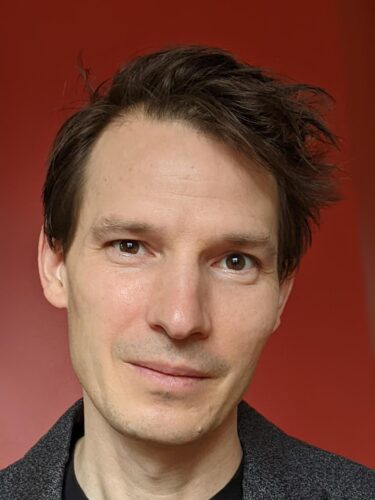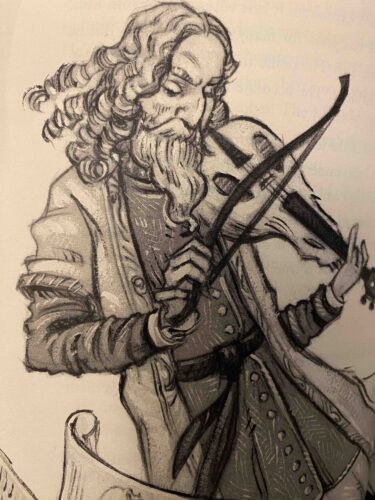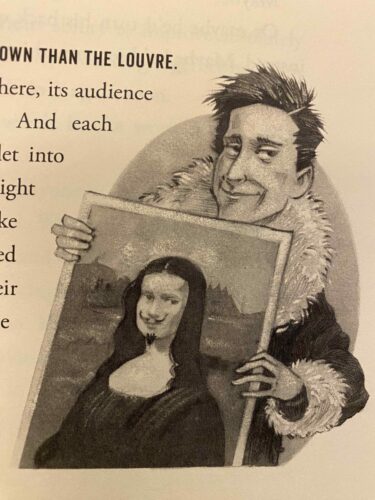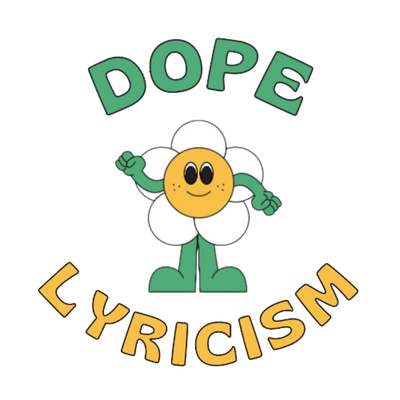[ad_1]
It was Memorial Day weekend, and I had a ton of new books tossed into my bag to read on the drive to the Wisconsin Dells. While doing so, one cover caught my eye. This cover, to be precise,
Interesting, right? I had a vague feeling that I already knew the story, but I thought it wouldn’t hurt to read a few pages of the book.
The next thing I know, I’m yelling out ramblings to the kids in the backseat about Leonardo da Vinci, the Louvre, fictional detectives (and thieves!), and how Picasso came to be. I was speeding down the highway, absorbed in the story of Nicola Day. terrible. I absolutely had to talk to this author about this book when I got home. After all, what you have here is a narrative piece of non-fiction that will totally engage your child reader. Here is its description:
Continue reading this post by scrolling
“Exactly 100 years ago, on a hot August day in Paris, a frantic security guard broke into the Louvre director’s office and shouted: the mona lisa is gone!of Mona Lisa, she’s gone!
No one knew who was behind the robbery. Was it an international band of thieves? Was it an art-hungry American billionaire? Was it Pablo Picasso, the young Spanish painter who wanted to reinvent the art of painting itself?
Travel back in time to fin-de-siècle Paris, an extraordinary era of revolutionary change. Let’s take a walk down that back street. Meet the notorious thieves and detectives of the time. Then travel further back in time to follow the painter Leonardo da Vinci. Mona Lisa, Through his dizzying, amazingly bizarre life.Discover the secrets at the heart of Mona Lisa–The most famous painting in the world should never have existed.
This is a mid-level non-fiction book, with black-and-white illustrations by Brett Hellquist throughout, written at a thriller pace, and a story of crime and celebrity, genius and beauty. “
And to my delight, Mr. Day himself was more than happy to answer some of my questions.
Betsy Bird: Nick! Thank you for joining us and for your willingness to tell us about the disappearance of the Mona Lisa. I picked up the book and found myself reading it almost in one go. I have no doubt that children will do the same. First of all, let’s talk about how this project started. I know you wrote the title BABY MEETS WORLD for adults, but writing narrative non-fiction about young children doesn’t necessarily lend itself naturally to mid-level heist-related titles. not. Where did the Mona Lisa come from?

Photo credit: Isaiah Day
Nicholas Day: Betsy! Thank you for sharing your stage. I am very happy that you liked the book. I don’t remember where I found out that the Mona Lisa was stolen, but I definitely remember thinking, “This is a story.” And the more I learned about the robbery, the more intrigued I became. The robbery was extraordinary, and the characters were bizarre and wonderful. Leonardo da Vinci was, well, always the extraordinary, strange and wonderful Leonardo da Vinci. And this story has a surprising and unexpected modern resonance. The theft of the Mona Lisa wasn’t the perfect crime, but it was kind of the perfect story. I am justly grateful to that mysterious white-smog man in the Louvre’s closet.
BB: oh yeah He is the one who created that wonderful opening scene. You see, the term “narrative non-fiction” is a relatively new term in popular lexicons, but I can’t think of a better way to describe what I’m doing in this book. The book is ridiculously engaging, but a large part of its heavy lifting is due to this voice and style you employ from the beginning. I don’t want to hear this, but I have to. How did you lower your voice for this narration?
ND: This is a great question and it makes me think about why I wanted to write for a younger audience. We’ve been seeing a lot of great children’s non-fiction lately, but I think there’s still a lot of room for new ways of telling these stories (for all ages). Audio, of course, is not a new method, but it is a tool that I think is sometimes underused in nonfiction for younger readers. Perhaps this is a remnant of children’s non-fiction sources. Focus more on the things, less on the problems: the American Revolutionary War, the warty cane toad, what have you got. inform of things. But the important thing is to communicate. That’s what draws the reader in. Perhaps it sounds like writer narcissism. (My story is more important than the facts of the Revolutionary War!) But we all know that this applies to fiction as well. Plot summaries are worth nothing. The story is what matters. It’s not crazy to think that applies to non-fiction as well.It’s a little wild to think of it wouldn’t do that Be.I can talk and Education content. You can have it all!
As for this particular narration, I mean, nobody knows. Betsy, you know, I think this is all an experiment. Discuss, see what works, and discard the rest. The narrative is so powerful here that the voice can be relatively light, based on the twin pillars of Theft and Leonardo.
BB: I agree! So the crux of the book is how he divides the story into these two parts. On the one hand we have the robbery and its investigation, on the other we have Leonardo’s life. Was this the format you always planned, or did it happen later in the writing process?
ND: It was completely planned for purely selfish reasons. Both stories were so good that I couldn’t bear to give up on one or the other. The question was always “Will it work?” I think the key here was strained. Once I started using different tenses for each story, like the present for Leonardo and the past for the theft, the book seemed to click together.

BB: You show how assumptions and conspiracy theories relate to the world we live in today, and you do a good job of making this book a very modern commentary on society. This comes up later in the book, but I appreciated the way you backed up and crafted this story, not just how the Mona Lisa became famous. Did you intend to make that connection from beginning to end when writing this book? Did it come naturally to you during the writing process? Did the editor suggest it?
ND: This was a delicate process.I didn’t want to end up like this point of the story. This is not a didactic book. (God forgive me.) I wanted the story to resonate with me after I finished reading it. how we live now. So it had to be light. It had to be built organically over the course of the book. In doing so, when you get to the end, and when you get to the part that I’ve made a little more clear, you should feel the natural, obvious connection that the reader has intuited before. There was even that coming out. This connection itself became clear during the course of the research. At least in my case, ideas like this come to me while reading or thinking, and I begin to feel that they are inevitable.
BB: Maybe I just don’t remember it clearly enough, but I’m pretty sure I’ve never seen Brett Hellquist illustrate a non-fiction work before. Did you always imagine that the book would include illustrations, or did the idea come to you later? What do you think of Hellquist’s spot art? This guy does Picasso pretty well I have to say.
ND: I can’t imagine this book without Brett’s drawings. (Well, you can, but it looks very boring.) I was thrilled when he agreed to explain it. His style is timeless in both eras. The original idea here came from my agent, Brenda Bowen. As far as I know, she saw the possibilities immediately after reading the manuscript. She was great and her ideas were great. No pictures, no captions. It shows that this is a story. And then Ann Kelly, the wonderful editor at Random House Studios, took that idea, put it into action, and somehow produced this wonderful book. I don’t know how.
Continue reading this post by scrolling
BB: Perhaps there were other stories and other characters that I originally wanted to include in this book. Given the time constraints and editing, I would put them aside. Are there any particular stories, anecdotes, or characters that you wanted to include in the book, regardless of how helpful they were to the flow of the story?

ND: There are many books in this book. It is an almost bottomless fountain of matter. (Once Random House approves the Director’s Cut, we’ll see it all at that point.) It’s so hard to stop writing about Leonardo. Everything is interesting. (His notebook!) And turn-of-the-century Paris is just as charming. A lot is happening! I wanted to write a book about the birth of modernism. I wanted to write a book about the birth of the police. I wanted to write a book about new understandings of time and space. Of course, I was really spoiled for choice, which made it even more painful to choose.
BB: Finally, can we expect more books of this kind to be published in the future?
ND: yes! Neil Porter publishes my picture book, Nothing, illustrated by Chris Raschka. (Chris Raschka!) It’s about composer John Cage, his famous “Silent” work, and how much there is in nothingness. It will be released next spring. And in 2025 there will be a new book of narrative non-fiction by Random House Studios and Anne Kelly. It’s about a year without a summer that was the aftermath of a volcanic eruption centuries ago. This is the story of climate shocks, sudden and frightening changes in the seasons. I wish you didn’t tell us too much today.

If you want to read this wonderful book for yourself, you will find it on the shelves of any bookstore or library on September 5th. Many thanks to Nicholas Day for answering my question, and to Annie Kelly and the people at Penguin Random House for organizing this talk. Special credit is also given to her designer Katrina Damkoehler for her book jacket work on this cover. Book this book now!
Filed under: Best Books, Best Books of 2023, Interviews
[ad_2]
Source link


